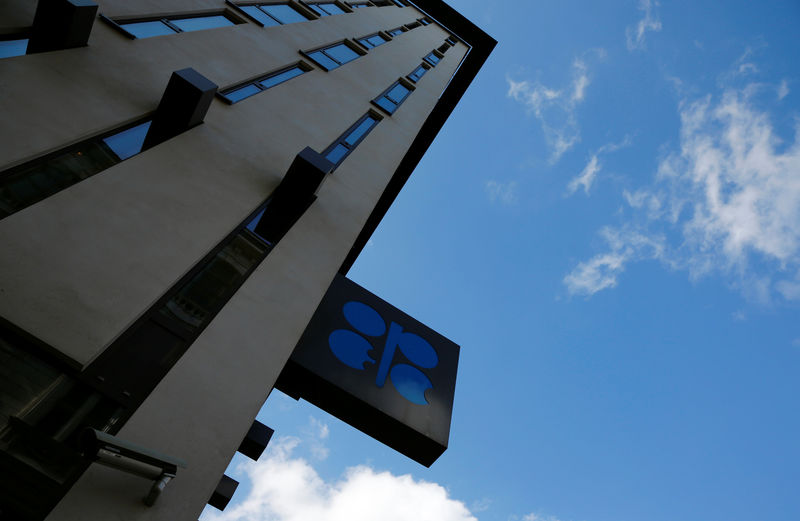 © Reuters. OPEC Aims for Modest Output Hike to Overcome Iranian Opposition
© Reuters. OPEC Aims for Modest Output Hike to Overcome Iranian Opposition(Bloomberg) — OPEC is discussing a relatively modest production increase before its meeting in Vienna this week, an attempt to bridge the gap between Russia’s push for a big rise and and Iran’s insistence that no change is needed.
While a compromise may be necessary to overcome vocal opposition from Tehran, Baghdad and Caracas, it could mean the resulting supply boost is smaller than oil traders — or indeed the U.S. President Donald Trump — had been anticipating. rallied on Monday after two weeks of losses.
Members of the Organization of Petroleum Exporting Countries are discussing an agreement that delivers 300,000 to 600,000 barrels a day of additional oil supply to global markets over the next few months, according to people briefed on the talks. If agreed, that would be smaller than the 1.5 million-barrel-a-day quota increase that Russia has proposed.
“People probably feared 1.5 million barrels a day,” but the current talk indicates a smaller increase, said Torbjorn Kjus, chief oil analyst at DNB ASA. “It’s going to be the most interesting meeting for a while.”
OPEC officials are also working on putting the cooperation between the cartel, Russia and other oil producers — the so-called OPEC+ group currently comprising 24 nations — on a permanent footing. That would be a major diplomatic breakthrough for Riyadh and Moscow after just two years of cooperation on oil policy.
The prospect of binding Russia, the world’s largest exporter after Saudi Arabia, more closely to OPEC might help persuade Iran and Venezuela to back higher production in the second half of the year.
While Iran said on Sunday it’s opposed to any increase to current quotas, a number of other countries are optimistic that a compromise can be reached allowing a relatively modest hike, the people said, asking not to be named discussing private conversations.
In the run-up to meetings of OPEC and its allies in Vienna this week, several nations have floated plans for production increases, but no consensus has emerged for what’s likely to be a fractious meeting.
After 18 months of squeezing output to drain a global glut, prices have rallied and inventories are closer to typical levels, sparking debate on the direction of policy in the second half of the year. The cartel is also under pressure from Trump, who has twice blamed it via his Twitter account for artificially inflating prices.
Russia, under pressure from domestic oil companies keen to start up new fields, has said the total increase in the group’s daily quota should be as much 1.5 million barrels. If allocated proportionally among all members of the group, only about two-thirds of that volume is likely to flow to the market because several countries — such as Venezuela where an economic crisis is slowly destroying the oil industry — are unable to raise output.
The increase of 300,000 to 600,000 barrels a day — above the current OPEC+ production of about 32 million barrels a day — is a less theoretical number. It would be a real increase in production from those countries with spare capacity including Saudi Arabia, Russia and the United Arab Emirates. Some OPEC members back increasing output by the lower end of the 300,000 to 600,000 barrel a day range, one of the people said.
Analysts at Societe Generale (PA:) SA predicted a difficult OPEC meeting, but ultimately a deal along the lines currently discussed.
“Saudi Arabia, the U.A.E., and Kuwait will increase by a combined 500,000 barrels a day, beginning in July,” with Russia adding about 200,000 in two to three months, analysts including Mike Wittner wrote in a report. Since this will offset losses in Venezuela, “the result will be broadly stable total OPEC crude, rather than continued declines.”
Source: Investing.com



























